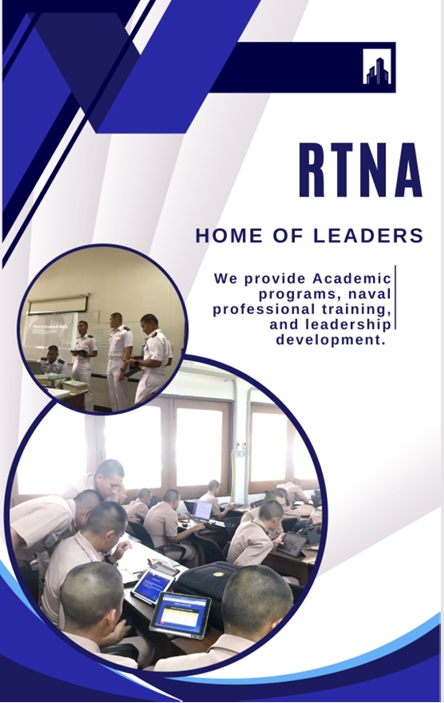ความต้องการจำเป็นในการพัฒนาภาวะผู้นำทางการสอน ของครูโรงเรียนพระตำหนักสวนกุหลาบ
คำสำคัญ:
ภาวะผู้นำทางการสอน, ความต้องการจำเป็น, การพัฒนาครูบทคัดย่อ
การวิจัยนี้เป็นการวิจัยเชิงบรรยาย มีวัตถุประสงค์เพื่อศึกษาความต้องการจำเป็นในการพัฒนาภาวะผู้นำทางการสอนของครูโรงเรียนพระตำหนักสวนกุหลาบ ประชากร คือ ผู้บริหารและครูโรงเรียนพระตำหนักสวนกุหลาบ ผู้ให้ข้อมูล 71 คน ประกอบด้วย ผู้อำนวยการ จำนวน 1 คน รองผู้อำนวยการ จำนวน 2 คน ครู จำนวน 68 คน เครื่องมือที่ใช้ในการวิจัย คือ แบบสอบถาม โดยมีลักษณะเป็นมาตราส่วนแบบประมาณค่า 5 ระดับ ตรวจสอบความตรงตามเนื้อหา (Content validity) มีค่า IOC อยู่ระหว่าง 0.67 – 1.00 สถิติที่ใช้ในการวิเคราะห์ข้อมูล ได้แก่ ค่าเฉลี่ยเลขคณิต ส่วนเบี่ยงเบนมาตรฐาน และดัชนีความต้องการจำเป็น (PNIModified) ผลการวิจัยพบว่า 1) ความต้องการจำเป็นในการพัฒนาภาวะผู้นำทางการสอนของครูโรงเรียนพระตำหนักสวนกุหลาบ ในภาพรวมอยู่ในระดับมากที่สุด (PNIModified = 0.556) องค์ประกอบที่มีความต้องการจำเป็นในการพัฒนาสูงที่สุด คือ การเป็นผู้นำด้านการสอนและการเรียนรู้ (PNIModified = 0.598) รองลงมา คือ การใช้ศาสตร์การสอน (PNIModified = 0.587) การเสริมสร้างความสามารถ (PNIModified = 0.572) การส่งเสริมผลลัพธ์ผู้เรียน (PNIModified = 0.541) การมีวัฒนธรรมในการทำงานและเรียนรู้ร่วมกัน (PNIModified = 0.531) และการเข้าใจวิสัยทัศน์และเป้าหมาย (PNIModified = 0.507) ตามลำดับ 2) วิธีการพัฒนาครูที่ได้จากแบบสอบถามในด้านที่มีดัชนีความต้องการจำเป็นสูงที่สุด 3 ลำดับ ได้แก่ การพัฒนาในเวลาปฏิบัติงานด้วยวิธีการเรียนรู้เป็นทีม และการพัฒนานอกเวลาปฏิบัติงานด้วยวิธีอบรมสัมมนา
เอกสารอ้างอิง
จิรวดี ทวีโชติ และวัลนิกา ฉลากบาง. (2561). ภาวะผู้นำการจัดการเรียนรู้ของครู. วารสารมหาวิทยาลัยราชภัฏร้อยเอ็ด, 12(1), 246-253.
ชวนคิด มะเสนะ. (2559). การพัฒนาทรัพยากรบุคคลทางการศึกษาในทศวรรษหน้า. วารสารบริหารการศึกษาบัวบัณฑิต มหาวิทยาลัยราชภัฏอุบลราชธานี, 16(1), 9-16.
โชติชวัล ฟูกิจกาญจน์. (2556). แนวทางการพัฒนาครูในประเทศไทย. วารสารสังคมศาสตร์, 2(1), 27-32.
ธารารัตน์ มาลัยเถาว์, นันทรัตน์ เจริญกุล, และพฤทธิ์ ศิริบรรณพิทักษ์. (2562). กลยุทธ์การพัฒนาครู ประถมศึกษา ตามแนวคิดการเรียนรู้ด้วยการนําตนเองและการจัดการศึกษาไปสู่การพัฒนาสังคม ที่ยั่งยืน. วารสารครุศาสตร์จุฬาลงกรณ์มหาวิทยาลัย, 47(4), 249-267.
พฤทธิ์ ศิริบรรณพิทักษ์ และคณะ. (2560). การพัฒนาแนวทางการเข้าสู่ตำแหน่งผู้อำนวยการสถานศึกษา. พริกหวานกราฟฟิก.
สำนักงานเลขานุการของคณะกรรมการยุทธศาสตร์ชาติ. (2560). ยุทธศาสตร์ชาติ พ.ศ.2561-2580. https://shorturl.asia/4WvTs
สำนักงานสภาพัฒนาเศรษฐกิจและสังคมแห่งชาติ. (2561). แผนแม่บทภายใต้ยุทธศาสตร์ชาติ (พ.ศ. 2566 – 2580). https://www.ratchakitcha.soc.go.th/DATA/PDF/2562/A/051/T_0001.PDF
สำนักมาตรฐานการศึกษาและพัฒนาการเรียนรู้. (2562). มาตรฐานการศึกษาของชาติ พ.ศ. 2561. บริษัท 21 เซ็นจูรี่ จํากัด.
สำนักเลขาธิการนายกรัฐมนตรี. (2560). Thailand 4.0 ขับเคลื่อนอนาคตสู่ความมั่นคง มั่งคั่ง ยั่งยืน. วารสารไทยคู่ฟ้า, 33, 2-17. https://spm.thaigov.go.th/FILEROOM/spm-thaigov/DRAWER004/GENERAL/DATA0000/00000368.PDF
สืบสกุล นรินทรางกูร ณ อยุธยา. (2561). การบริหารทรัพยากรมนุษย์ทางการศึกษาแนวใหม่. สำนักพิมพ์จุฬาลงกรณ์มหาวิทยาลัย.
สุวรรณี เนินทอง. (2558). แนวทางการพัฒนาครูเพื่อการจัดการเรียนรู้ของโรงเรียนในกลุ่มเครือข่ายสหวิทยาเขตทุ่งหินเทิน สังกัดสำนักงานเขตพื้นที่การศึกษามัธยมศึกษา เขต 42. [วิทยานิพนธ์ครุศาสตรมหาบัณฑิต]. มหาวิทยาลัยราชภัฏนครสวรรค์.
Castetter, W., & Young, I. (2000). The human resource function in educational administration (ih ed.). Merrill.
Contreras, T. S. (2016). Pedagogical leadership, teaching leadership and their role in school improvement: a theoretical approach. Propósitos y representaciones, 4(2), 6.
Dessler, G. (2013). Fundamentals of human resource management. Pearson.
Fonsén, E., & Soukainen, U. (2020). Sustainable Pedagogical Leadership in Finnish Early Childhood Education (ECE): An Evaluation by ECE Professionals. Early Childhood Education Journal, 48(2), 213-222. https://doi.org/10.1007/s10643-019-00984-y
Hallinger, P. (2009). Leadership for 21st century schools: From instructional leadership to leadership for learning. paper presented at Public lecture series of the Hong Kong institute of education, Hong Kong, China.
Heikka, J. (2013). Enacting distributed pedagogical leadership in Finland: Perceptions of early childhood education stakeholders. Researching leadership in early childhood education.
Heikka, J., Pitkäniemi, H., Kettukangas, T., & Hyttinen, T. (2021). Distributed pedagogical leadership and teacher leadership in early childhood education contexts. International Journal of Leadership in Education, 24(3), 333-348. https://doi.org/10.1080/13603124.2019.1623923
Hindin, A., Morocco, C. C., Mott, E. A., & Aguilar, C. M. (2007). More than Just a Group: Teacher Collaboration and Learning in the Workplace. Teachers and Teaching: Theory and Practice, 13(4), 349-376.
Holton III, E. F., & Swanson, R. A. (2011). Foundations of human resource development. ReadHowYouWant.com.
MacNeill, N., Cavanagh, R., & Silcox, S. (2003). Beyond Instructional Leadership: Towards Pedagogic Leadership. Paper presented at Annual Conference of the Australian Association for Research in Education, Auckland, New Zealand.
NIEPA. (2020). Pedagogical Leadership: A Handbook for Leading Learning in Schools. National Institute of Educational Planning and Administration.
Robinson, V., Hohepa, M., & Lloyd, C. (2009). School Leadership and Student Outcomes: Identifying What Works and Why Best Evidence Synthesis Iteration (BES). (Vol. 41). Australian Council for Educational Leaders Winmalee.
Vega, V. (2013). Teacher development research review: Keys to educator success. https://www.edutopia.org/teacher-development-research-keys-success
Webb, R. (2005). Leading Teaching and Learning in the Primary School:From ‘Educative Leadership’ to ‘Pedagogical Leadership’. Educational Management Administration & Leadership, 33(1), 69-91. https://doi.org/10.1177/1741143205048175
Wu, S. (2020). EXPLORING PEDAGOGICAL LEADERSHIP IN THE EARLY CHILDHOOD CONTEXT OF SINGAPORE. National Institute of Education (NIE).
Young, Y. (2016). Pedagogical Leadership to Support New Teachers’ Growth. [Master’s Thesis in Education], University of Jyväskylä, Department of Education.

ดาวน์โหลด
เผยแพร่แล้ว
ฉบับ
ประเภทบทความ
สัญญาอนุญาต
ลิขสิทธิ์ (c) 2024 โรงเรียนนายเรือ

อนุญาตภายใต้เงื่อนไข Creative Commons Attribution-NonCommercial-NoDerivatives 4.0 International License.
เนื้อหาและข้อมูลในบทความที่ลงตีพิมพ์ในวารสารวิชาการโรงเรียนนายเรือ ด้านสังคมศาสตร์ มนุษยศาสตร์ และ ศึกษาศาสตร์ ถือเป็นข้อคิดเห็นและความรับผิดชอบของผู้เขียนบทความโดยตรง ซึ่งกองบรรณาธิการวารสาร ไม่จำเป็นต้องเห็นด้วย หรือร่วมรับผิดชอบใด ๆ
บทความ ข้อมูล เนื้อหา รูปภาพ ฯลฯ ที่ได้รับการตีพิมพ์ในวารสารวิชาการโรงเรียนนายเรือ ด้านสังคมศาสตร์ มนุษยศาสตร์ และ ศึกษาศาสตร์ ถือเป็นลิขสิทธิ์ของโรงเรียนนายเรือ หากบุคคลหรือหน่วยงานใดต้องการนำทั้งหมดหรือส่วนหนึ่งส่วนใดไปเผยแพร่ต่อหรือเพื่อกระทำการใด ๆ จะต้องได้รับอนุญาตเป็นลายลักษณ์อักษร จากโรงเรียนนายเรือก่อนเท่านั้น





